How Does A Rotavapor System Work?
Rotary evaporators are commonly used equipment in laboratories. Through electronic control, the flask is rotated at a suitable and constant speed to increase the evaporation area. The evaporating flask is under negative pressure by the vacuum pump. While rotating, the evaporation flask is heated at constant temperature in a water bath, and the solution in the flask is heated and diffused in the rotating flask under negative pressure. Rotovap for sale are mainly used for distillation, concentration, drying and recovery during synthesis and analysis. At present, it is one of the necessary basic experimental instruments in the domestic chemical industry, pharmaceutical industry, colleges and universities, scientific research laboratories, etc. Mainly used in biology, medicine, chemical industry, food and other fields.
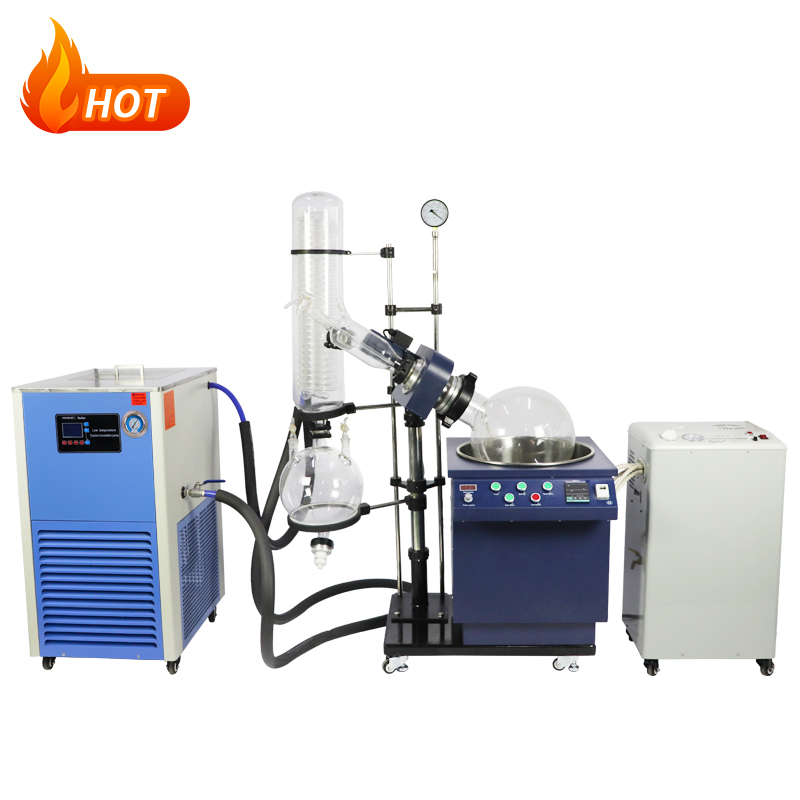
How does a rotary evaporation system work?
RE-201 Rotary Evaporator can rotate under constant temperature heating and negative pressure to form a thin film, evaporate efficiently, and then cool down to recover the solvent. It is especially suitable for crystallization, separation, and solvent recovery of heat-sensitive materials. Some models can also be used for reflow. Extraction. It is an instrument and equipment for scientific research and production in the biological, pharmaceutical, chemical, and food industries. Let us take RE-201D as an example to introduce how the rotary evaporation system works.
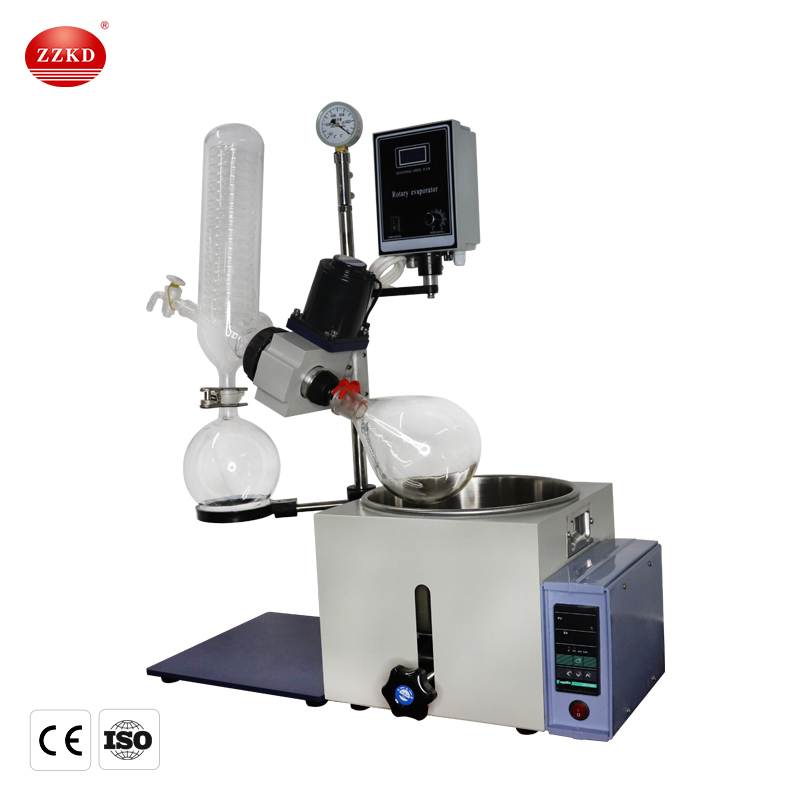
RE-201D rotary evaporator operating procedures:
1. Connect the hose to the condensate tap, and connect the vacuum hose to the vacuum pump. After turning on the vacuum pump, check whether the bottle openings are well sealed, whether the vacuum pump itself leaks air, and whether the sealing ring at the rotating shaft is in good condition.
2. Adjust the angle of the main unit: just loosen the connecting screws of the main unit and the column. The host can be tilted arbitrarily between 0-45 degrees.
3. Turn on the condensed water, first pour the water into the heating tank. It is easy to use pure water, and tap water should be placed for 1-2 days before use. Turn on the power supply 220V/50Hz, connect the evaporating bottle to the host (don't let go), turn on the vacuum pump to make it reach a certain degree of vacuum, release your hand.
4. Adjust the height of the main unit: press down the pressure rod at the bottom of the heating tank, adjust the arc left and right to make it reach the appropriate position, and then the desired height can be achieved by leaving the pressure rod with your hand. This instrument is equipped with a specially designed lifting water bath, which must be powered on after adding water. The temperature control scale is 0-99°C for reference.
5. Turn on the speed control switch, the green light is on, adjust the speed knob on the left side, and the evaporating bottle starts to rotate. Turn on the temperature adjustment switch, the green light is on, adjust the temperature adjustment knob on the left side, the heating tank starts to automatically control the temperature, and the instrument enters the trial operation. Once the temperature and vacuum are within the required range, the solvent can be evaporated into the receiving bottle.
6. After the evaporation is completed, first turn off the speed control switch and the temperature control switch, press the lower lever to make the main engine rise, then turn off the vacuum pump, and open the vent valve above the condenser to communicate with the atmosphere, remove the evaporating bottle, and the evaporation process is over .
The principle of rotary evaporator:
Rotary evaporators use the principle that solvents have lower boiling points under reduced pressure to evaporate solvent from a sample. The evaporating flask is rotated at a constant speed by adjusting the speed. By rotating the material, a large-area uniform film can be formed on the inner wall of the flask. The evaporating flask is heated evenly by a water bath or an oil bath, and under vacuum conditions, materials with a lower boiling point evaporate rapidly. The solvent vapor is cooled by a high-efficiency glass condenser and recycled in the receiving bottle.
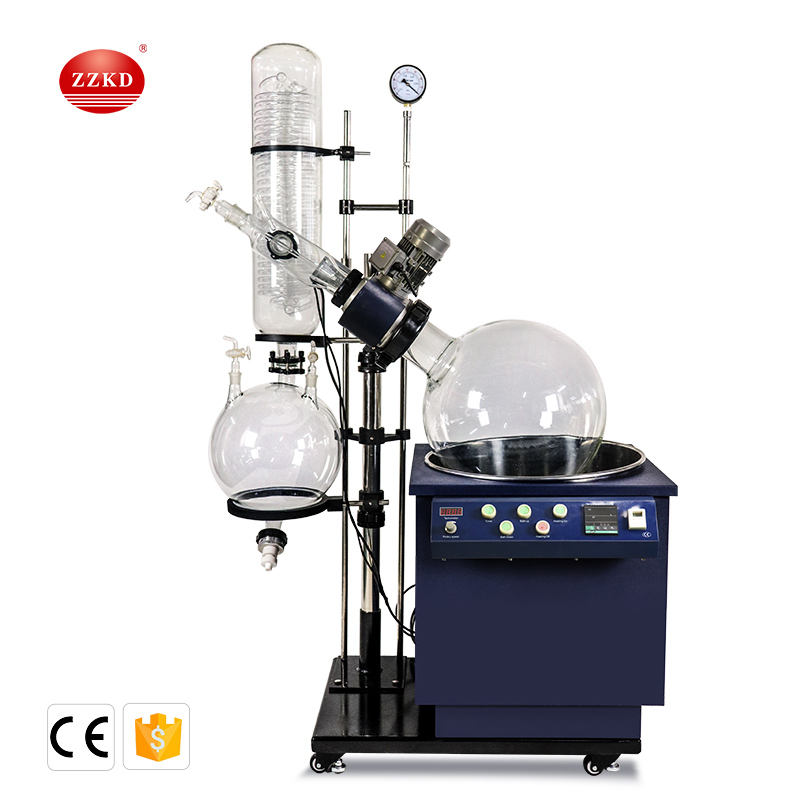
Installation of rotary evaporator:
1. Take the stainless steel base plate, upright rod, nut, bracket and vacuum gauge out of the packing box and place it on the operating table stably.
2. Install the pole: first, assemble the bracket and the vacuum gauge on the pole; then, remove one nut at the lower end of the stainless steel bracket, tighten the other nut on the stand, and penetrate into the stainless steel bottom plate; then remove the Tighten the nut with the vacuum surface facing the installer. Place the rack evenly on the workbench.
3. Install the main unit: connect the main unit to the base of the machine head, tilt it about 45 degrees to the right, and fasten the screws on the frame.
4. Install the glass through shaft: put the glass through shaft into the host, install the PTFE gasket and flange, and tighten the screws.
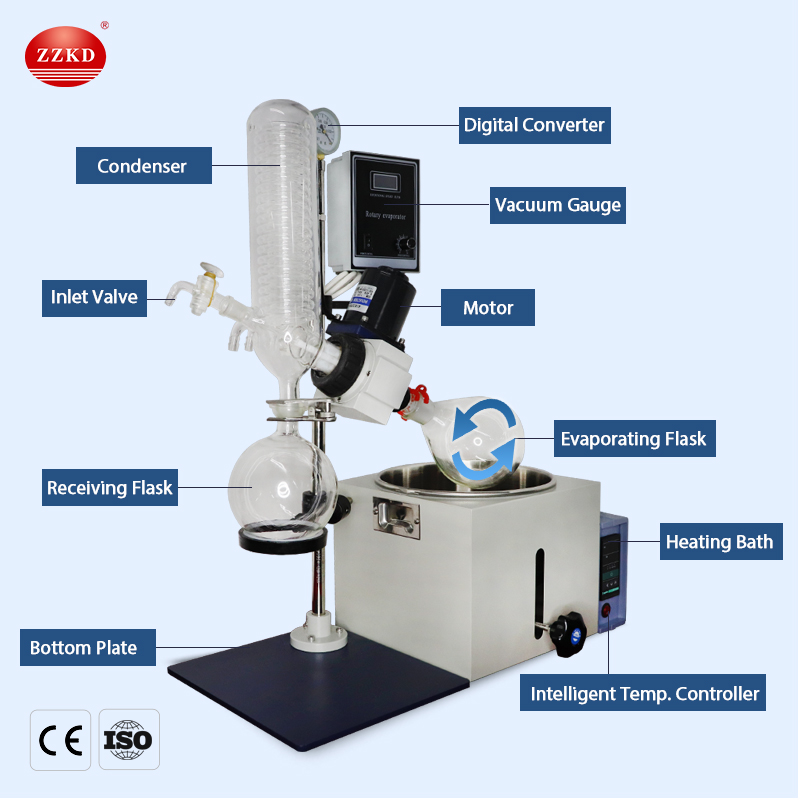
5. Fix the flange end of the condenser on the machine head, and make the condenser vertical up and down, and each connector of the condenser is backward.
6. Connect the PTFE tube to the feed valve, and then install it to the left end of the condenser.
7. Connect the collection bottle to the lower port of the condenser and secure it with the bottle clamp.
8. Fix the bottle holder ring on the stainless steel pole with screws and adjust it to an appropriate height to stabilize the collection bottle.
9. Sleeve the rotating bottle on the right end of the rotating shaft and clamp it with a bottle clamp.
10. Place a water bath under the spinner and add 2/3 of the water or heat transfer oil to the pot.
11. Fix the controller on the handle with screws, and plug in the five-pin motor plug.
12. Connection method of supporting equipment: connect the vacuum pump or laboratory vacuum switch with a vacuum tube at the suction port of the condenser; use a silicone tube to connect the liquid inlet and outlet of the condenser and the liquid inlet and outlet of the supporting low-temperature cooling circulating pump.
Features of rotary evaporator:
1. The rotary evaporator is sealed with polytetrafluoroethylene and fluorine rubber, which can maintain a high degree of vacuum and meet the requirements of laboratory use.
2. The condenser is used to condense the samples, which is convenient for collection and can also ensure the recovery rate of materials.
3. Continuous collection is possible without affecting the system vacuum and solution distillation
4. Digital constant temperature control of water bath. Water bath hand wheel lift
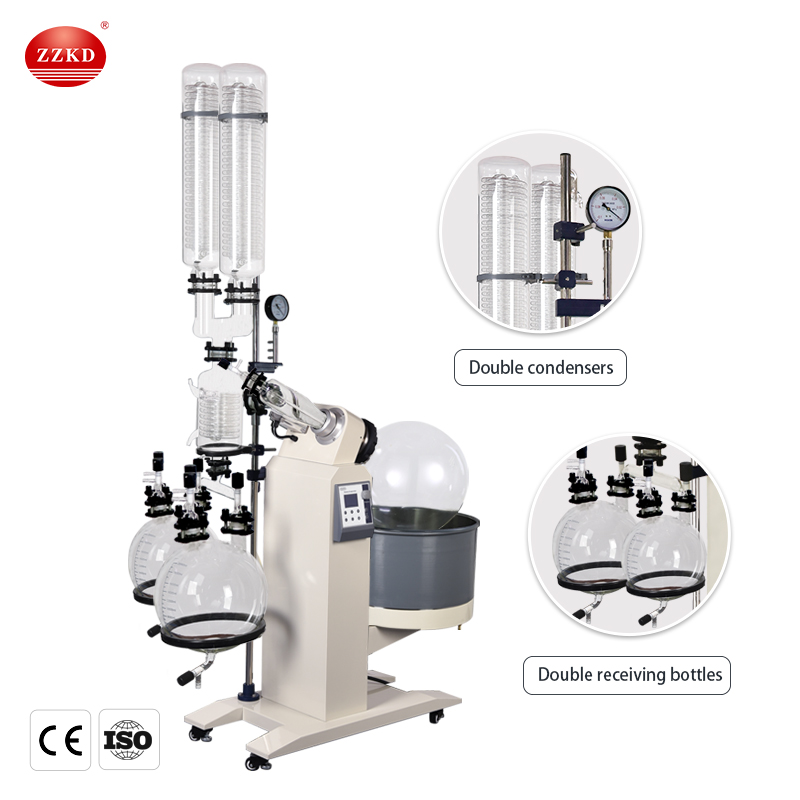
5. The structure is reasonable, the materials are exquisite, the mechanical structure adopts a large number of stainless steel and aluminum alloy parts, and all the glass parts are made of high temperature resistant high boron glass. Import of key electrical components. The fluorine rubber seals have all adopted the new national standard, which is convenient for users to purchase and replace.
6. Under the action of centripetal force and friction between the liquid sample and the evaporating bottle, the liquid sample forms a liquid film on the inner surface of the evaporating bottle, and the heating area is large.
7. PTFE discharge valve, corrosion-resistant and pollution-free.
Zhengzhou Keda Machinery Equipment Co., Ltd. is an enterprise integrating production and trade, providing experimental and production equipment. We have been producing rotary evaporators for ten years, and we continue to explore and develop. Our rotary evaporator has won unanimous praise from domestic and foreign customers. The company promises to provide certain after-sales service for the sold rotary steaming products. If necessary, please contact us to purchase.


